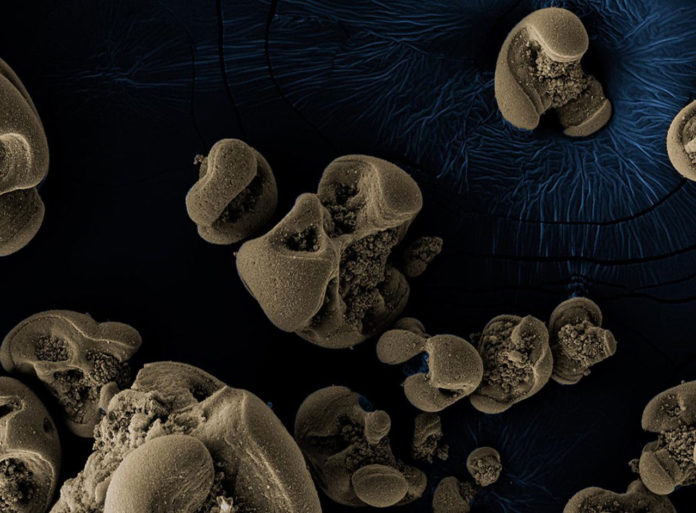Manganese is one of the most abundant elements on Earth. The oxidation of manganese has long been theorized—yet has not been demonstrated to fuel the growth of chemolithoautotrophic microorganisms.
Now, microbiologits at Caltech have discovered bacteria that feed on manganese. They also use the metal as their source of calories.
The bacteria is the first that found to use manganese as their source of fuel. Scientists also demonstrated that the bacteria could also use manganese to convert carbon dioxide into biomass. This process is also known as chemosynthesis.
The bacteria was found accidentally after performing unrelated experiments using light, a chalk-like form of manganese. Jared Leadbetter, professor of environmental microbiology at Caltech, had left a glass jar soiled with the substance to soak in tap water in his Caltech office sink before departing for several months to work off-campus. When he returned, the jar was coated with dark material.
He said, “I thought, ‘What is that?’ I started to wonder if long-sought-after microbes might be responsible, so we systematically performed tests to figure that out.”
“The black coating was oxidized manganese generated by newfound bacteria that had likely come from the tap water itself. There is evidence that relatives of these creatures reside in groundwater, and a portion of Pasadena’s drinking water is pumped from local aquifers.”
“There is a whole set of environmental engineering literature on drinking-water-distribution systems getting clogged by manganese oxides. But how and for what reason such material is generated, there has remained an enigma. Many scientists have considered that bacteria using manganese for energy might be responsible, but evidence supporting this idea was not available until now.”
This discovery aids scientists to comprehend the geochemistry of groundwater better. It is known that bacteria can degrade pollutants in groundwater, a process called bioremediation. When doing this, several vital organisms will “reduce” manganese oxide, which means they donate electrons to it, like how humans use oxygen in the air.
Leadbetter said, “The bacteria we have discovered can produce it. Thus they enjoy a lifestyle that also serves to supply the other microbes with what they need to perform reactions that we consider to be beneficial and desirable.”
Journal Reference:
- Yu, H., Leadbetter, J.R. Bacterial chemolithoautotrophy via manganese oxidation. Nature 583, 453–458 (2020). DOI: 10.1038/s41586-020-2468-5
